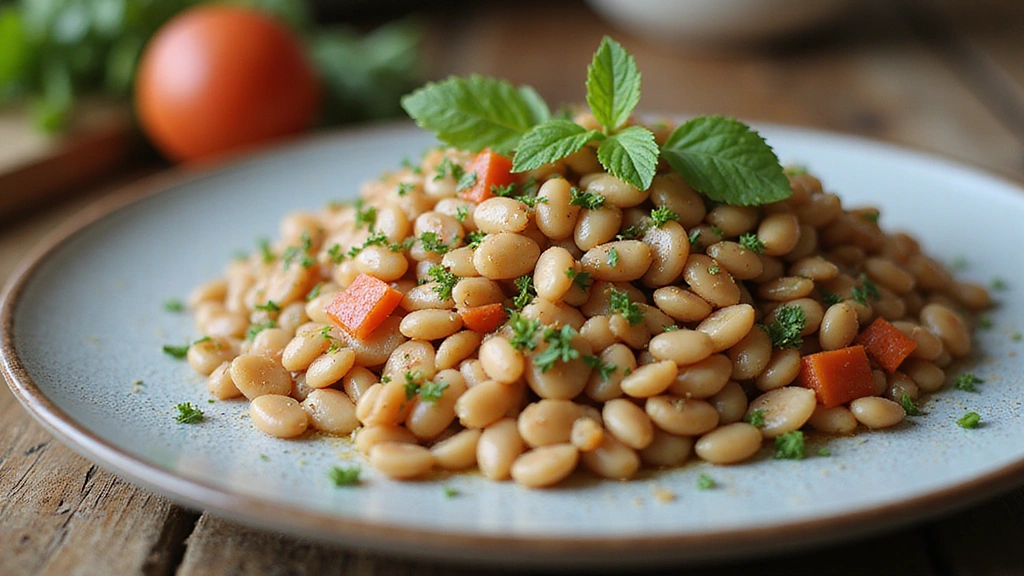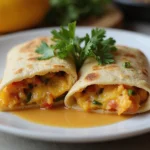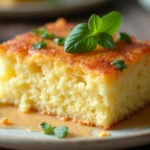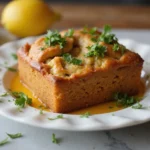Starting your day with a nutritious breakfast is essential, and mung bean recipes are a fantastic way to do this.
Known for their rich protein content and subtle nutty flavor, mung beans provide a hearty and satisfying meal.
My introduction to mung beans came during a visit to India, where I was captivated by the vibrant dishes made from this versatile legume.
These recipes not only offer a delicious start to your day but also pack a punch of health benefits that will energize you for whatever lies ahead.
The History and Cultural Significance
• Mung Bean Recipes For Breakfast Nutritious Start traces its origins to South Asia, where it was originally created by ancient agricultural societies.
• The dish evolved over decades as cooking methods and regional preferences adapted, eventually becoming the beloved versions we know today.
• In India, this dish traditionally appears at breakfast tables and during festive occasions, symbolizing health, prosperity, and nourishment.
• While many variations exist across different regions, the authentic version maintains a balance of spices and textures that sets it apart from imitations.
Recipe Overview
Nutritional Information (per serving)
Ingredients
Essential Equipment Guide
Blender: A high-quality blender is crucial for achieving the smooth texture needed for mung bean pancakes or smoothies. Look for models with strong blades and multiple speed settings for versatility.
Steamer Basket: This tool allows for gentle cooking of mung beans and retains their nutrients. Alternatives include an electric steamer or a colander set over a pot of simmering water, but ensure it fits well in your cookware.
Non-Stick Skillet: A good non-stick skillet is essential for cooking pancakes evenly without sticking. Choose one with a sturdy base to distribute heat evenly and make flipping easier.
Preparation Methods
Soaking Mung Beans: Soaking the mung beans is crucial as it softens them and enhances their digestibility. Aim for at least 4 hours, or overnight for best results. Rinse well before cooking to remove any anti-nutrients.
Blending: Blending the soaked mung beans with water creates a smooth batter essential for pancakes. Start on low speed to avoid splattering, gradually increasing to high until fully blended. The ideal consistency should be similar to pancake batter—pourable but thick enough to hold its shape.
Steaming: Steaming allows the mung beans to cook without losing nutrients and flavor. Use a steamer basket over boiling water, ensuring the beans are not submerged. Steam for about 10-15 minutes until tender yet firm.
Step 1: Soak the Mung Beans
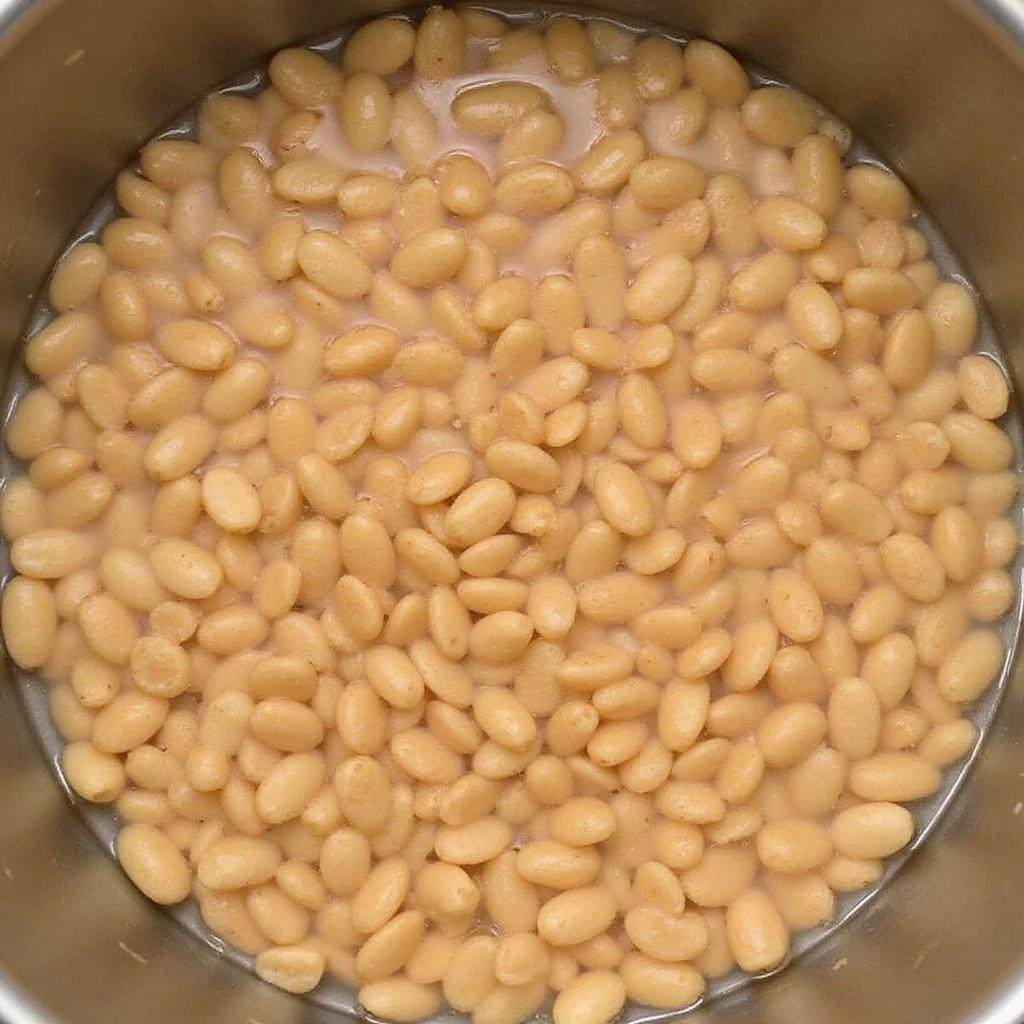
Begin by rinsing the mung beans under cold water.
Place them in a bowl and cover with water, allowing them to soak for at least 4 hours.
This process softens the beans and makes them easier to blend.
After soaking, drain and rinse the beans before proceeding.
Step 2: Blend the Mung Beans
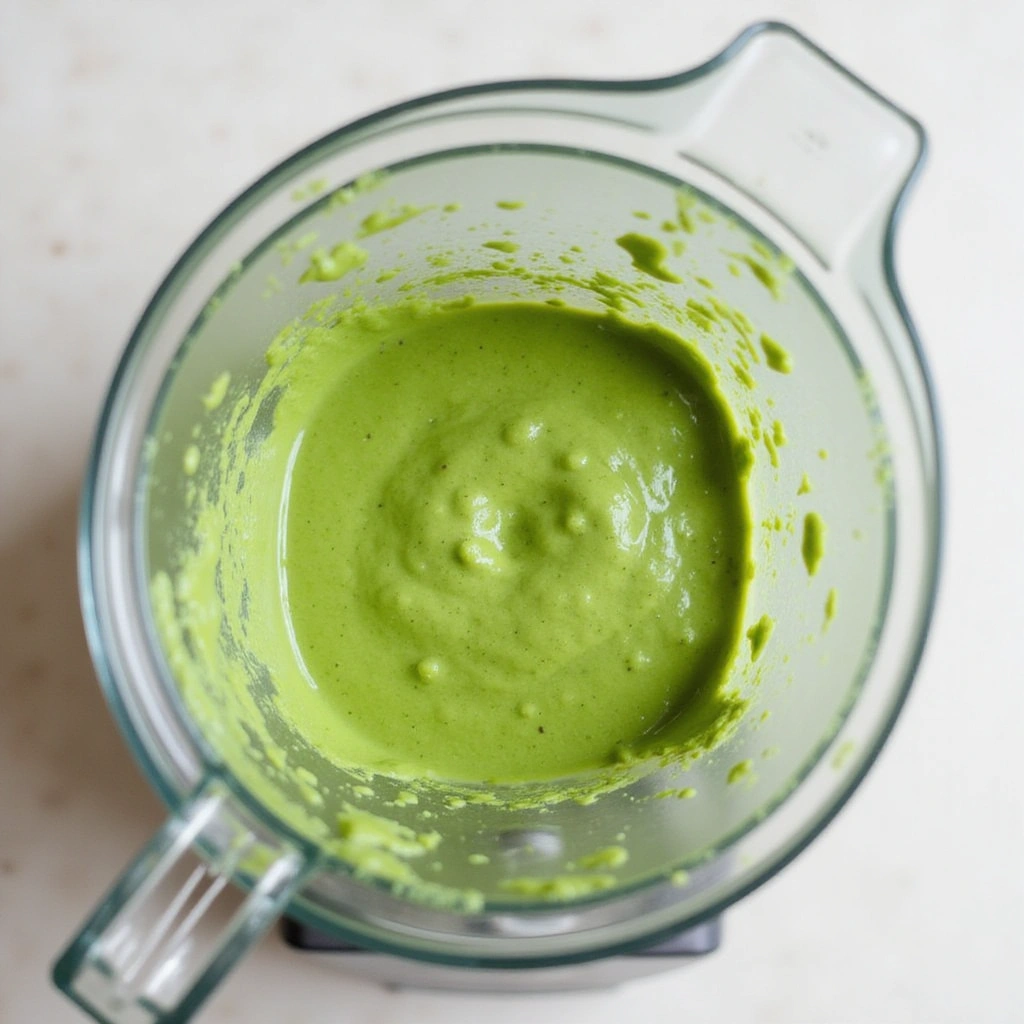
Transfer the soaked mung beans to a blender.
Add one cup of water and blend until smooth, starting at a low speed to prevent splattering.
The batter should be thick, resembling pancake mix, so adjust water as needed.
Scrape down the sides of the blender as necessary for an even consistency.
Step 3: Prepare the Vegetables
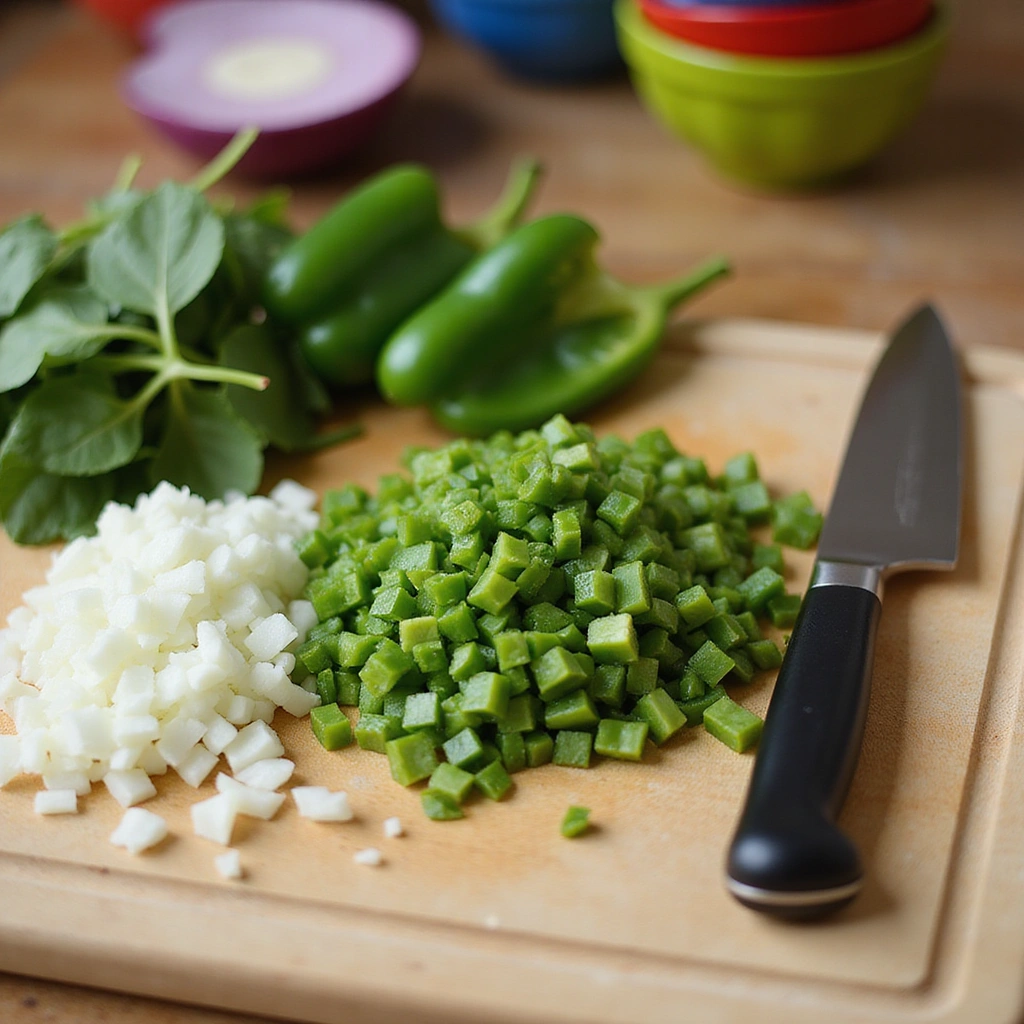
Chop the onion, bell pepper, and spinach finely.
Ensure all vegetables are prepped and ready to mix into the batter for even distribution.
This step adds flavor and nutrition to the pancakes, so don’t skip it.
Set aside the chopped vegetables in a bowl until the batter is ready.
Step 4: Mix the Ingredients
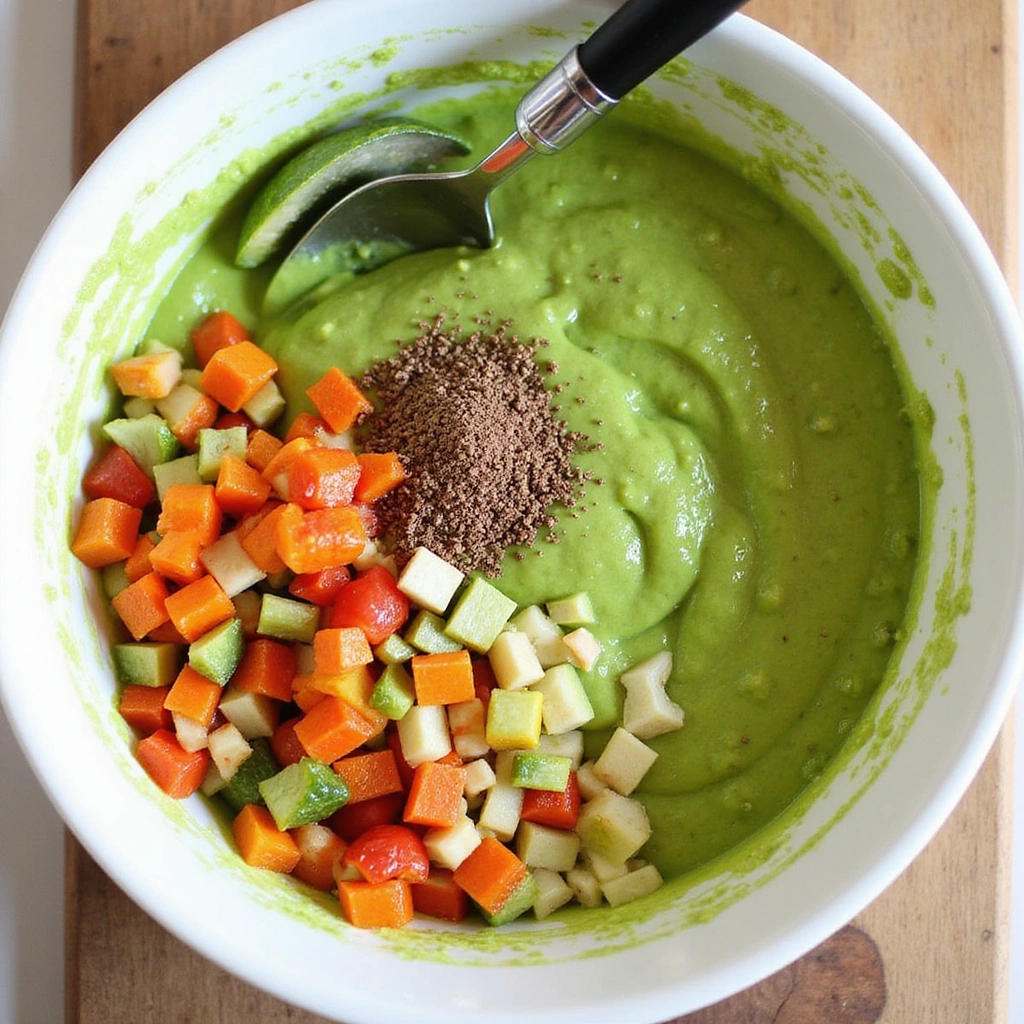
In a large bowl, combine the blended mung bean batter with the chopped vegetables.
Add salt, cumin powder, and turmeric for seasoning.
Stir everything together until fully incorporated, ensuring the spices are evenly mixed.
The batter should be thick but still pourable; adjust with water if necessary.
Step 5: Heat the Skillet
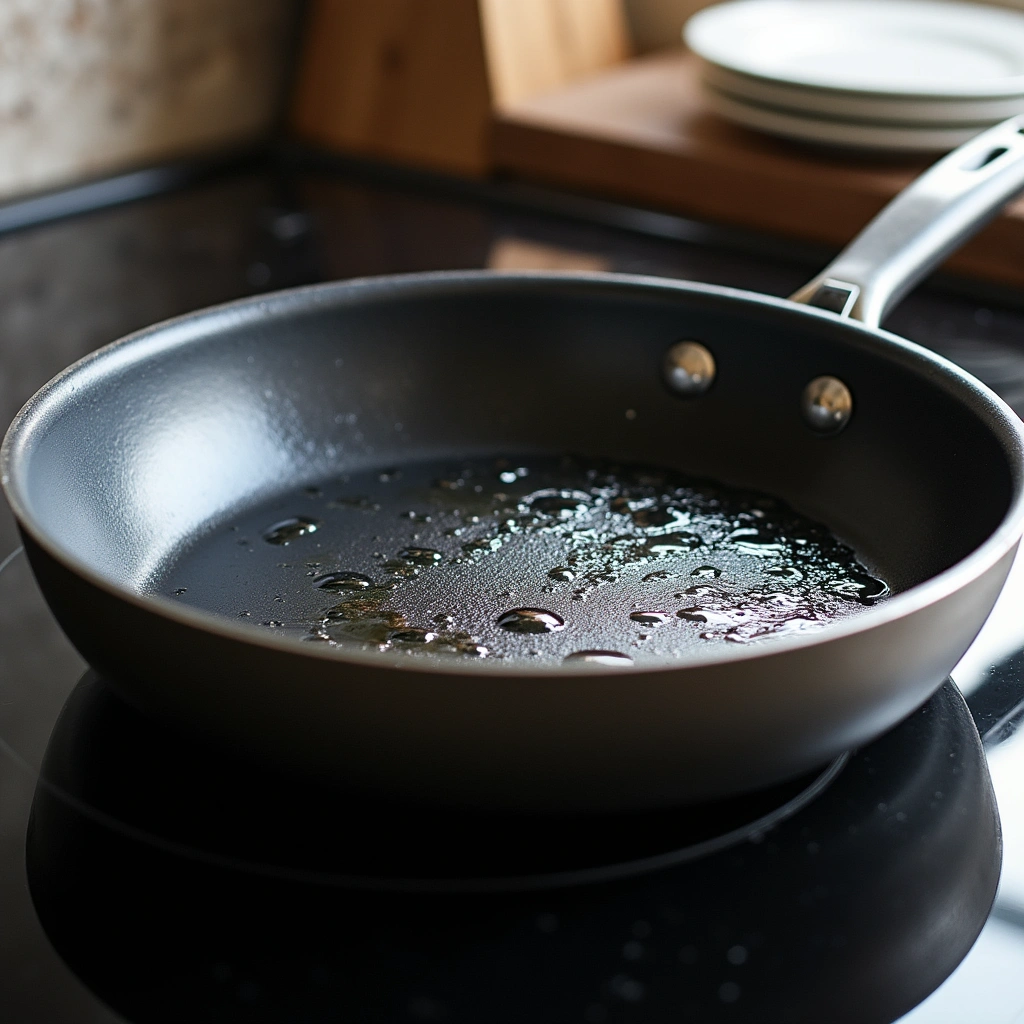
Place a non-stick skillet over medium heat and allow it to warm up for a minute.
Add a small amount of oil to the skillet, ensuring it covers the surface evenly.
This helps prevent sticking and gives a crispy edge to the pancakes.
Test the heat by sprinkling a drop of water; it should sizzle when ready.
Step 6: Cook the Pancakes
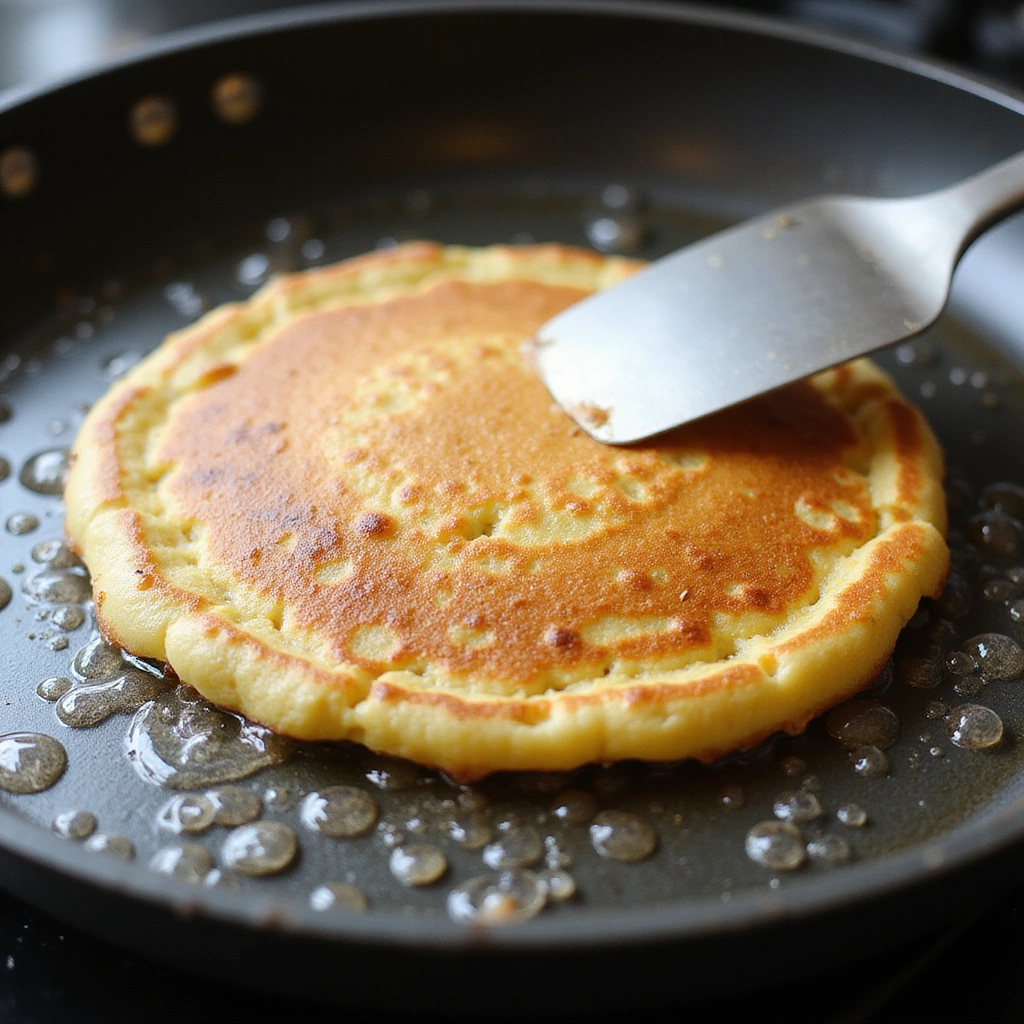
Pour a ladleful of the batter onto the skillet, forming a round pancake shape.
Cook for about 3-4 minutes until bubbles form on the surface.
Flip the pancake using a spatula and cook for another 2-3 minutes until golden brown.
Repeat with the remaining batter, adding more oil as needed.
Step 7: Prepare the Yogurt Garnish
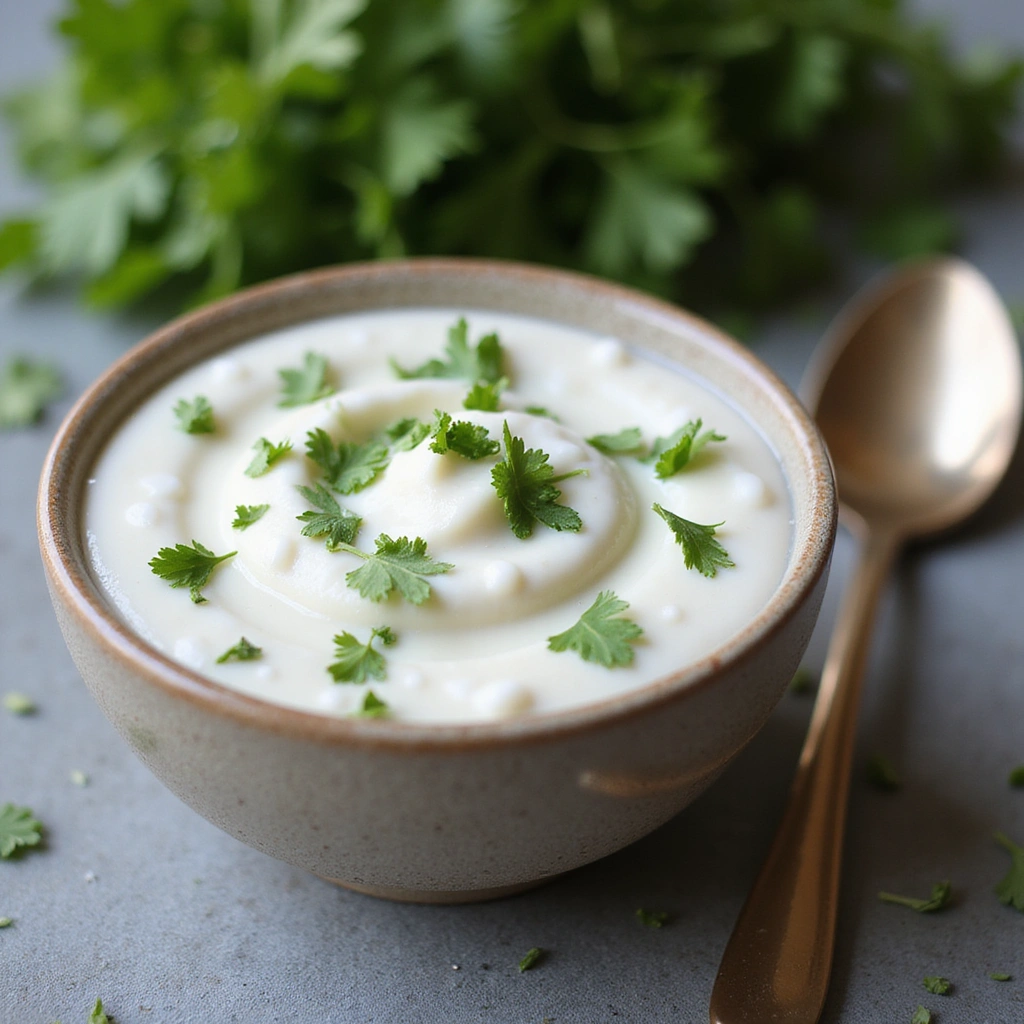
While the pancakes are cooking, prepare the yogurt garnish.
Spoon yogurt into a small bowl, adding a sprinkle of salt and chopped cilantro for flavor.
Mix well to combine; this will add a creamy and tangy contrast to the savory pancakes.
Set aside until ready to serve.
Step 8: Serve and Enjoy
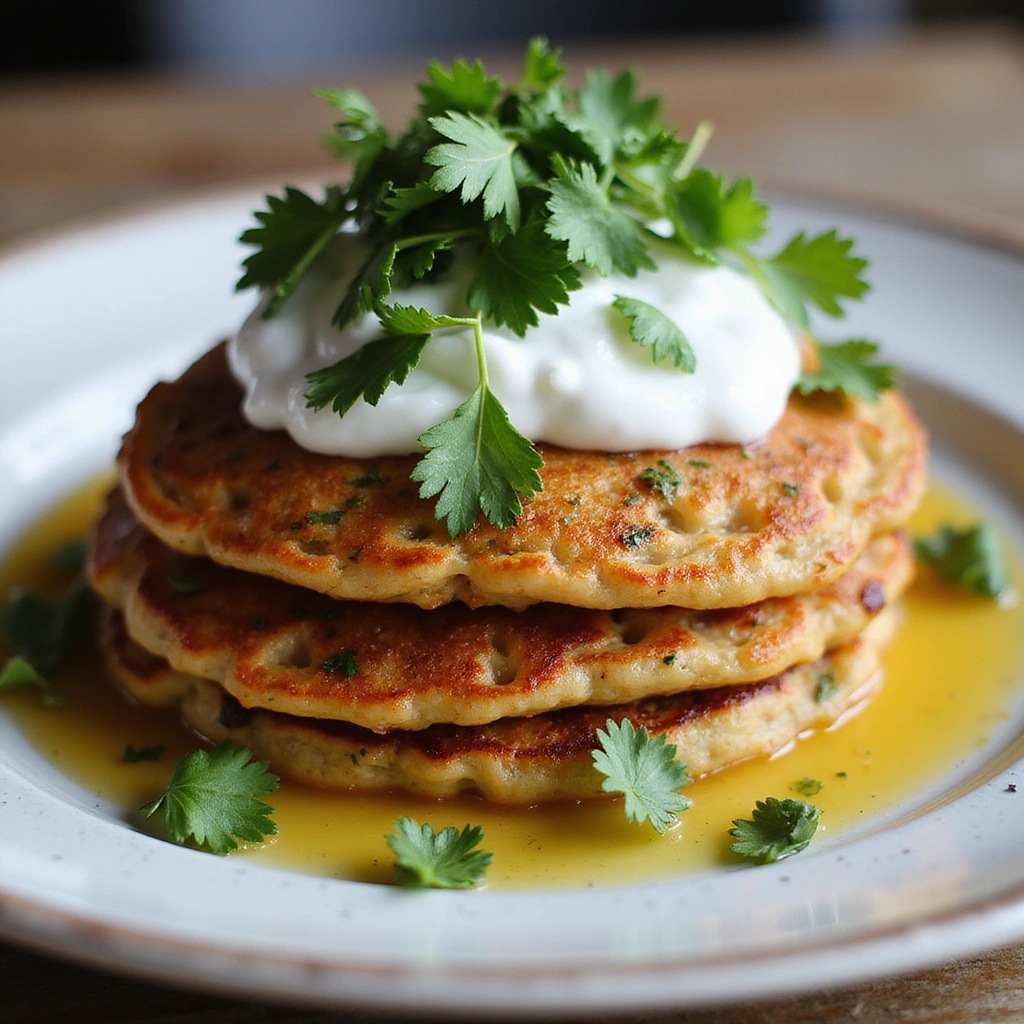
Once the pancakes are cooked, stack them on a plate, and serve warm.
Top with a generous dollop of the yogurt mixture for added flavor.
Garnish with additional cilantro if desired, and serve immediately.
Enjoy your healthy and delicious mung bean breakfast!
Critical Timing and Temperature Guide
Soaking Mung Beans: Soak for at least 4 hours or overnight for optimal softness. If they are too firm when blended, they won’t create a smooth batter, resulting in a gritty texture.
Cooking Pancakes: Maintain medium heat to ensure even cooking without burning. Look for bubbles on the surface to know when to flip; if they are browning too quickly, lower the heat.
Serving Temperature: Serve pancakes warm for the best flavor and texture. Cold pancakes can become dense and lose their appealing taste.
Pro Tips for Mung Bean Recipes For Breakfast Nutritious Start
• Ingredient Selection: Choose high-quality mung beans that are fresh and free from blemishes, as they significantly affect the dish’s flavor and texture.
• Preparation Secret: Allow the blended batter to rest for 10 minutes before cooking; this enhances the texture of the pancakes.
• Temperature Management: Ensure your skillet is properly heated before adding the batter to achieve a nice crispy exterior.
• Texture Enhancement: For fluffier pancakes, add a pinch of baking powder to the batter just before cooking.
• Flavor Layering: Experiment with spices like chili powder or ginger to add depth to the pancakes.
• Make-Ahead Strategies: Prepare the batter the night before and refrigerate it, making breakfast preparation swift and easy.
• Restaurant-Quality Finishing Touches: Drizzle a little olive oil or melted butter on the pancakes right before serving for added richness.
• Equipment Optimization: Use a heavy-bottomed non-stick skillet to prevent hot spots and ensure even cooking.
Troubleshooting Common Issues
• Texture Too Dense: This can occur if the batter is too thick. Add a tablespoon of water at a time until reaching the desired consistency before cooking.
• Flavors Unbalanced: If the pancakes are bland, consider adjusting the seasoning or adding more salt or spices to the batter.
• Pancakes Sticking: Ensure the skillet is adequately greased and preheated. If sticking persists, reduce the heat slightly.
• Uneven Cooking: This often happens if the heat is too high. Lower the temperature and allow the pancakes to cook longer for even browning.
• Too Much Oil: If the pancakes are greasy, reduce the amount of oil used for cooking. A light coating is usually sufficient.
Variations and Regional Differences
• Indian Pesarattu: A traditional Andhra Pradesh pancake made with green mung beans, often served with ginger chutney, emphasizing regional flavors.
• Chinese Mung Bean Congee: A savory porridge made with mung beans and rice, flavored with scallions and sesame oil for a comforting breakfast.
• Thai Mung Bean Salad: A fresh salad featuring mung beans, herbs, and a citrus dressing, highlighting the versatility of mung beans beyond breakfast.
• Modern Interpretations: Incorporating ingredients like quinoa or almond flour for a gluten-free twist while maintaining the essence of the classic recipe.
Food Science Behind the Recipe
• Protein Content: Mung beans are a complete protein source, providing essential amino acids necessary for muscle repair and overall health.
• Soaking Benefits: Soaking beans reduces anti-nutrients and enhances nutrient absorption, making them easier to digest and more beneficial.
• Maillard Reaction: The browning of the pancakes during cooking is due to the Maillard reaction, which enhances flavor and creates appealing textures.
Frequently Asked Questions
What’s the most common mistake people make when preparing mung bean pancakes? The most common mistake is not soaking the beans long enough, resulting in a gritty texture. Always soak for at least 4 hours for best results.
Can I prepare components of this dish in advance? Yes, you can soak the mung beans and prepare the batter the night before and store it in the refrigerator, making breakfast quick and easy.
How do I adapt this recipe for dietary restrictions? For gluten-free versions, ensure all your ingredients are certified gluten-free, and you can substitute regular flour with almond or rice flour.
What’s the best way to store and reheat leftovers? Store leftovers in an airtight container in the fridge for up to 3 days. Reheat in a skillet over low heat until warmed through.
Can I freeze this dish? Yes, you can freeze cooked pancakes. Place them between layers of parchment paper and store in a freezer-safe bag for up to 2 months. Reheat directly from frozen.
What wine or beverages pair best with this dish? A light, citrusy tea or a fresh fruit smoothie complements the flavors well without overpowering the dish.
How can I scale this recipe up for a crowd? Simply multiply the ingredients as needed; just ensure you have a large enough skillet or cook in batches to avoid overcrowding.
What side dishes complement this recipe best? A fresh fruit salad or a light vegetable stir-fry pairs wonderfully with mung bean pancakes, enhancing the meal’s nutrition.
How do professional chefs elevate this dish for restaurant service? Chefs often incorporate a unique sauce or garnish, such as spicy yogurt or herb oils, to add complexity and visual appeal.
Serving and Presentation Guide
• Traditional Presentation: Stack the pancakes on a large plate, garnished with fresh herbs and yogurt on the side, enhancing visual appeal and inviting flavors.
• Modern Plating Ideas: Use a wide, shallow bowl to serve the pancakes, drizzling them with a vibrant sauce and sprinkling with seeds for texture.
• Accompaniment Suggestions: Serve with a side of spicy chutney or fresh fruit to complement the savory pancakes and add freshness.
• Special Occasion Presentation: Create a layered pancake tower, alternating with yogurt and fruits, and drizzling with honey or maple syrup for a festive touch.
Conclusion
Mung bean recipes offer a delicious and nutritious way to kickstart your day.
With their versatility and rich flavor, they can easily become a breakfast staple.
I encourage you to try these recipes and discover the wonderful world of mung beans for yourself.
